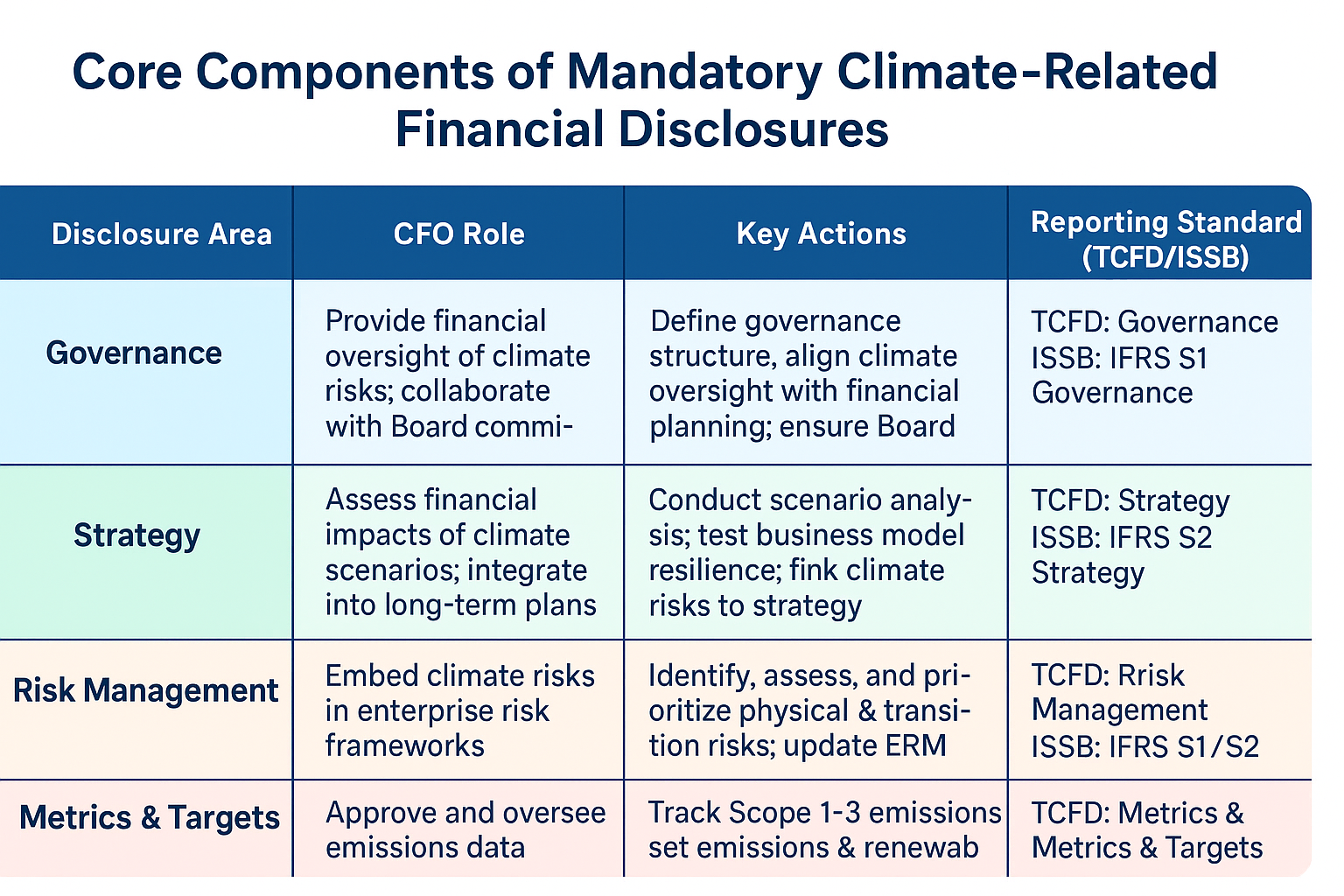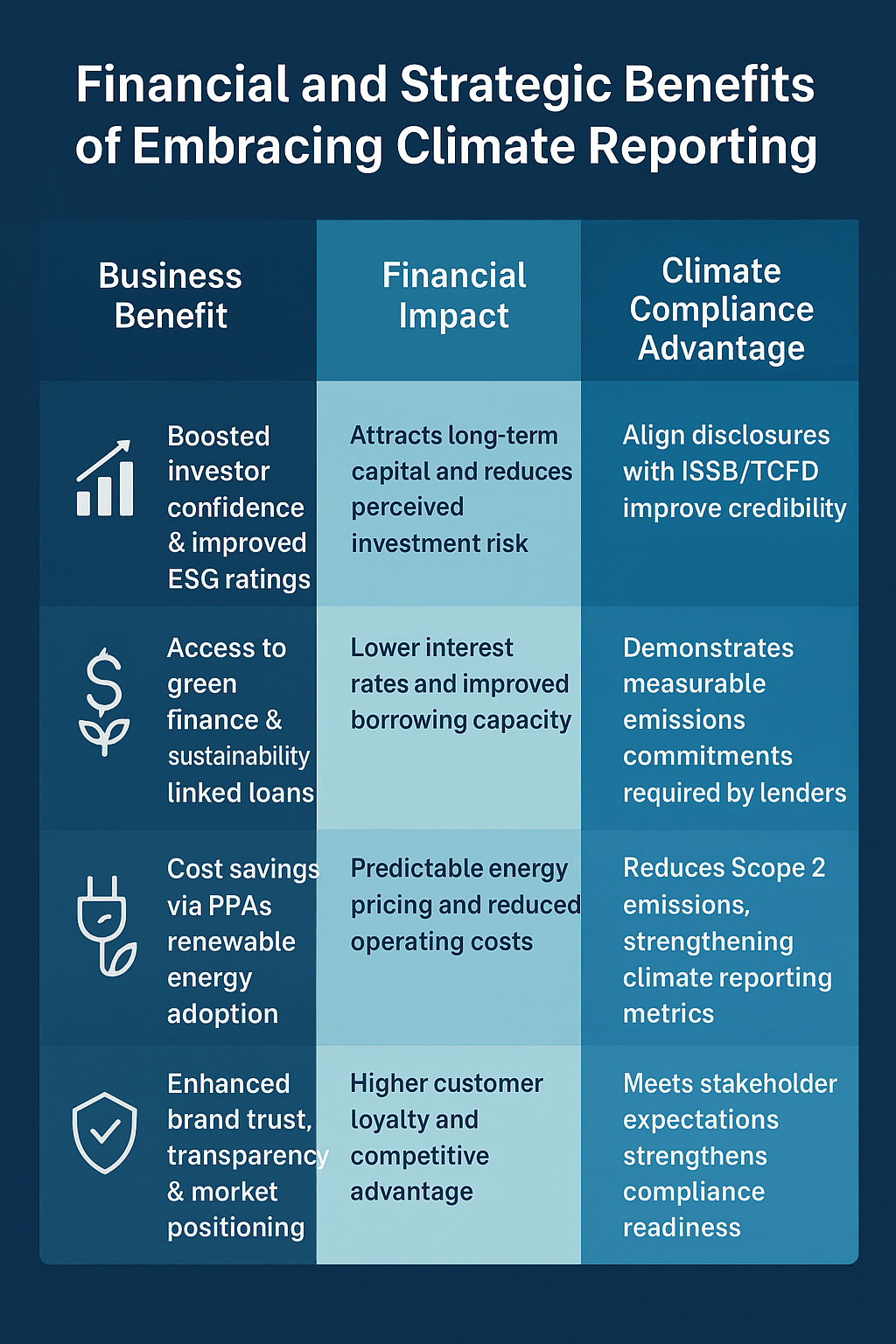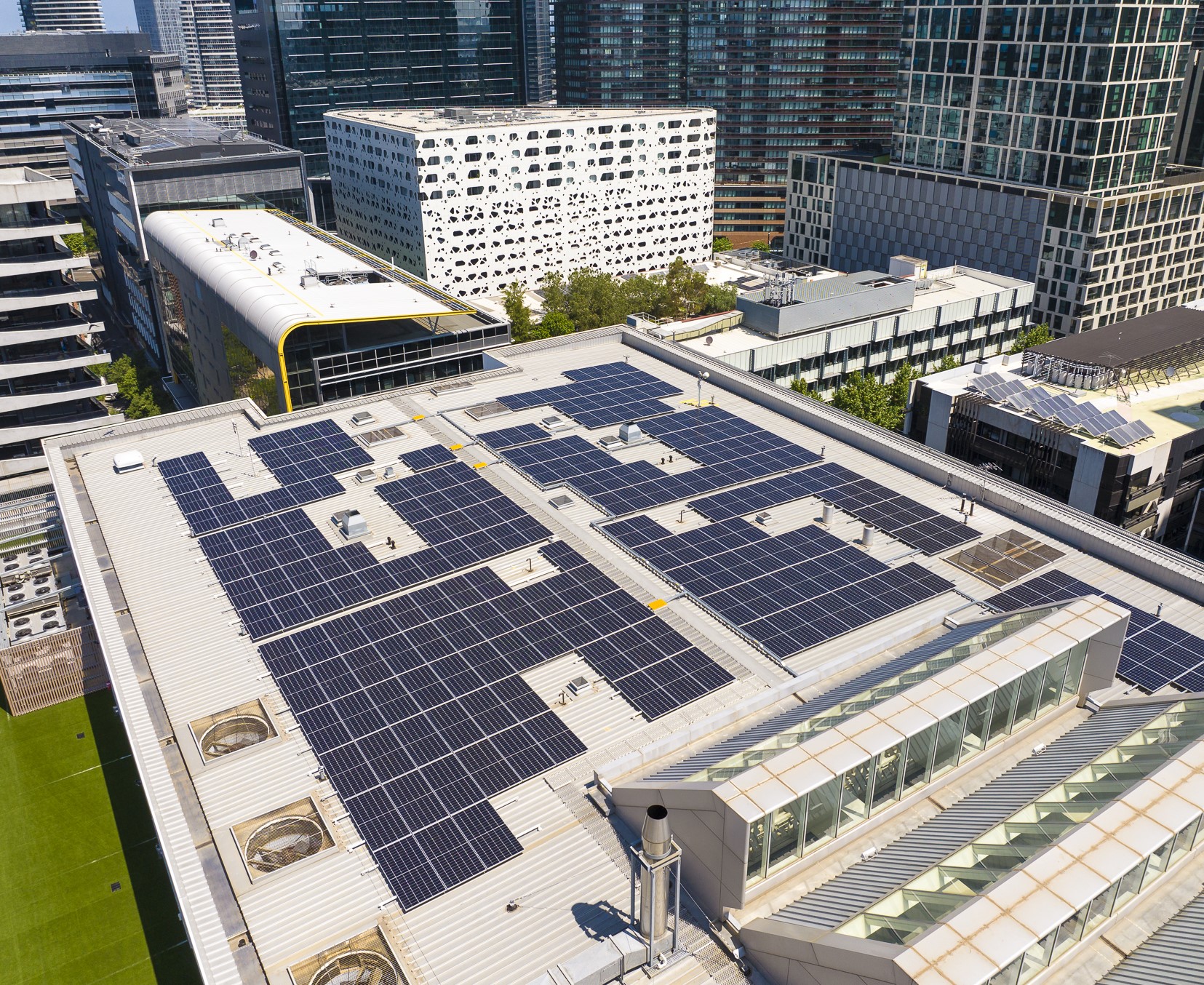Mandatory Climate Reporting: What CFOs Need to Know (2026–2028)
.jpg)
The mandatory climate reporting structure of Australia is likely to reshape the way companies measure financial risk, performance, and sustainability. For CFOs, the shift is not just for regulatory compliance, it’s more about boosting investor trust, forming financial resilience, and decreasing Scope 2 emissions via renewable strategies, like Power Purchase Agreements (PPAs). Since this climate financial disclosures in Australia are now compulsory, all financial leaders need to shift to renewable energy business operations.
Understanding Mandatory Climate Reporting in Australia
What is mandatory climate reporting?
As per the mandatory climate reporting, businesses need to disclose their climate-related financial information, such as climate risks, governance structures, greenhouse gas emissions (Scope 1, 2, and 3), and opportunities. They provide these disclosures within financial statements, and not just as a standalone report for sustainability.
From voluntary ESG reporting to mandated, finance-integrated disclosure
In the past, disclosing sustainability reports in Australia was voluntary. But now with increasing climate risks, the government is put businesses under strict investor scrutiny. So, many businesses are under pressure to transform to these mandatory, standardised disclosures. With this change, there will be more accountability, transparency, and comparability across various industries.
Scope 1, 2 & 3 in financial disclosures
CFOs require to include their emissions data into their yearly financial statements:
Scope 1: It involves direct emissions from their business owned operations
Scope 2: Involves purchased electricity (PPAs, solar, grid)
Scope 3: Value chain emissions, generally the most difficult and largest to quantify
Alignment with global frameworks
The Australian regime goes well with the International Sustainability Standards Board (ISSB), and Task Force on Climate-related Financial Disclosures (TCFD). For this, ASIC, Treasury, and AASB are working together for assuring the new reporting standards meet the global expectations while being a practical step for business in Australia.
Regulatory precision
The proposed climate reporting regime in Australia aligns with AASB and ISSB standards. As the implementation progresses, now CFOs must constantly consult advisers for ensuring all the changing compliance needs are met.
Visual: Voluntary vs. Mandatory Climate Reporting in Australia
Key Reporting Timeline (2026–2028): What CFOs Should Expect

Why Climate Reporting Matters for CFOs
Here’s why climate reporting is essential for CFOs:
- Investors expect transparency:
With clearer and improved ESG data, there’s better improvement in capital access.
- Climate risks = financial risks:
In the coming few years, finances, including asset valuation, insurance premiums, lending terms, and supply chain disruptions will rely on climate exposure.
- Climate disclosures become part of financial statements:
With this change, CFO responsibility increases to be more aware of their environmental impact.
- Scope 2 emissions turn into measurable compliance metrics:
With renewable energy adoption, particularly PPAs, there’s a direct influence on reducing scope 2 emissions.
With PPAs along with on-site renewables, there's a direct impact on reducing Scope 2 emissions while boosting your investor perception and compliance.
The Role of PPAs in Climate Reporting Compliance
Power Purchase Agreements (PPAs) are a vital tool for reducing Scope 2 emissions while providing CFOs more accurate reporting. This renewable energy model offers long-term access to sustainable energy at quite predictable costs. Meanwhile, adopting this model also provides you with traceable certificate ownership for mandatory climate reporting purposes.
Why PPAs matter for compliance
- Improve alignment with ISSB/TCFD disclosure standards
- Support market-related Scope 2 emissions reporting
- Improve governance credibility and investor perception
- Offer measurable emissions reduction that’s backed by renewable certificates or LGCs
Financial and reputational benefits
CFOs embracing PPAs can attain more long-term savings, showcase their tangible climate progress, and hedge energy price volatility.
Case example
Businesses all across Queensland are shifting to solar PPAs for stablising energy prices while minimising emissions. This strategy is highly attractive with climate reporting becoming mandatory for all businesses.
Core Components of Mandatory Climate-Related Financial Disclosures

CFO Action Plan – Preparing for the Transition (2026–2028)

Challenges CFOs Will Face in Climate Reporting
With Australia moving towards mandatory climate reporting, CFOs have to navigate their complex landscape that goes beyond older finance structures. The changing disclosure needs demand deeper cross-department collaboration, stricter data accuracy, and constant alignment with global frameworks.
Here are the core challenges that CFOs are likely to face when implementing the mandatory climate reporting:
1. Complicated Scope 3 Estimations
The Scope 3 emissions still are the complicated part of climate reporting. It is because tracking across logistics partners, supplies, downstream activities, and waste streams need extensive data collection. Moreover, highly coordinated engagement is required across the value chain.
2. Regulatory Unpredictability Across Jurisdictions
CFOs need to keep up with the increasingly changing rules across Australia, the US, Europe, and other global markets. The differing timelines, definitions, and expectations make this compliance more challenging.
3. Gathering High-Quality Climate Data
Many organisations still have to struggle with incomplete, inconsistent, or siloed climate data. Without proper governance frameworks, such data gaps would lead to investor scrutiny or non-compliance.
4. Integrating Sustainability into Financial Modelling
Translating climate metrics into financial impacts, like risk assessments, cash flow forecasts, scenario planning, and asset impairments, needs advanced modelling abilities that several organisations still don’t have.
5. Limited Internal Skillsets
CFOs often have limited internal skillsets due to lack of cross-functional expertise, especially in carbon accounting, climate science, ESG data governance, and lifecycle assessment.
The Shift Toward AI-Powered Sustainability Tools
With increasing pressure for compliance, businesses are quickly shifting towards digital transformation in green energy. With the rapid use of AI-powered ESG tools, CFOs can easily forecast climate risks, streamline reporting, and maintain alignment with international standards. All this is managed while decreasing operational overheads.
With these solutions, modern climate reporting has been redefined by increasing audit readiness, ensuring accuracy, and empowering finance leaders to concentrate on strategy instead of paperwork.
Financial and Strategic Benefits of Embracing Climate Reporting

Why Choose Agile Energy for Sustainability & Reporting Support
Agile Energy offers complete sustainability and compliance support to CFOs trying to understand mandatory climate reporting. Here’s why businesses need to choose us:
- We have years of expertise in renewable energy efficiency and integration.
- Supports companies with audit preparation, PPA system alignment, and Commercial Solar Brisbane.
- Helps businesses with Scope 1–3 mapping, as well as carbon data tracking
- Provides customised renewable solutions (PPAs, solar, audits) in compliance with Australian standards.
FAQs – Mandatory Climate Reporting (2026–2028)
1. What is mandatory climate reporting and who must comply?
From 2026, large organisations, followed by medium and smaller entities by 2028 have to switch to renewable energy models, like PPAs to reduce their impact on the environment.
2. When does mandatory climate reporting begin?
The phased rollout will begin from 2026.
3. How do PPAs reduce Scope 2 emissions for reporting?
PPAs help in replacing grid electricity with more traceable renewable energy.
4. What are penalties for non-compliance?
For non-compliances, there are various penalties, like fines, ASIC enforcement, and governance breaches.
5. How can CFOs prepare internal systems for data assurance?
CFOs can prepare their existing system for data assurance by adopting emissions software, establishing data controls, and training finance teams.
6. How do TCFD and ISSB guide Australia’s standards?
TCFD and ISSB help in setting up global frameworks and integrating it into AASB reporting rules.
7. Can on-site PPAs count toward market-based Scope 2?
Yes, on-site PPAs count toward market-based Scope 2. The provided certificates are retained.
8. Is renewable energy investment counted toward compliance targets?
Yes, solar and PPAs directly support Scope 2 reductions to meet the compliance targets.
9. Do we need LGCs to claim reductions?
Yes, LGC ownership is essential for market-based reporting and claiming reductions.
Conclusion – The CFO’s Role in Building a Low-Carbon Future
From investor confidence to risk resilience, it’s critical for CFOs to shift to mandatory climate reporting in Australia. With early adoption of renewable strategies and PPAs, businesses can benefit from measurable Scope 2 reductions. Plus, they become part of Australia’s future-ready financial governance.
Get in Touch with Agile Energy Today
When it comes to integrating sustainability reporting and PPAs into your business strategy, you need expert guidance. Contact Agile Energy experts today for consultation.

Agile Advantage - Unlocking full value from solar & storage: The business case for batteries

End-of-Year Energy Audit: 10 ways to start 2026 leaner and cleaner

Agile Advantage - Embedded Networks 101: Turning electricity from a cost centre into a profit centre

Top 5 Energy Incentives for Australian Businesses (2025)

Managing solar and battery rollouts for national portfolio

Risk management in renewables

Commercial Solar ROI in 2025: Maximise Your Business Savings

Scaling SAFe in large-scale energy organisations: How executives can harness the Scaled Agile Framework (SAFe) to accelerate the energy transition

Always-On Agile operating model for Australia’s energy transition

Integrated energy & carbon strategies: A Playbook for future-proofing Australian manufacturing

Weathering the storm: Protects solar assets from heavy rainfall risk

Transforming dead space into active assets: How Agile unlocks roofs, car parks, and land for revenue

Agile Advantage - Why energy data is the new gold for Australian manufacturer

Solar Battery Rebate

Agile Advantage - E is Everything: Energising Australian Businesses

Agile Advantage - Riding the renewable wave: Why Australian businesses are embracing solar energy

Agile Advantage - Why CFOs should prioritise renewable energy investments in 2025

Agile Advantage - Empowering Australian Businesses: Unlocking energy efficiency and sustainability

Agile Advantage - Inspiring the young workforce: How rolling out renewables sparks motivation

Agile Advantage- The power of vertical integration in solar project delivery

Agile Advantage - Making complex simple: Navigating the complexity of solar installations

Agile Advantage - Rising cost of insurance : Impact on solar assets

Agile Advantage - Monetising your solar assets: Converting pre-purchased systems into power purchase agreements (PPAs)

Agile Advantage - The Magic of experience: Partnering for performance in renewables

Agile Advantage - Solar rooftop safety: Risk management guide

Agile Advantage - Clear paths to carbon reduction: Renewables and more for Australian businesses

Agile Advantage - Seven Deadly Sins of Solar Installations: Mistakes Businesses Must Avoid

CEO's view on managing increasing energy costs

Carbon Accounting and your business

Join Agile Energy at the Healthcare Real Estate Summit

Carbon Projects - Where to Start?

TRADE ACCUs WITH US! From the desk of Equipoised Group
Ready to Power Your Business with Sustainable Energy?
Let's take the first step towards a brighter and greener future.


